Radicchio is a leafy vegetable that belongs to the chicory family. It is typically deep red or purple in color, with white or light green veins running through it. Radicchio has a slightly bitter flavor and is often used in salads, as a garnish, or cooked in Italian dishes. There are several different types of radicchio, including:
1) Rosso di Treviso Tardivo
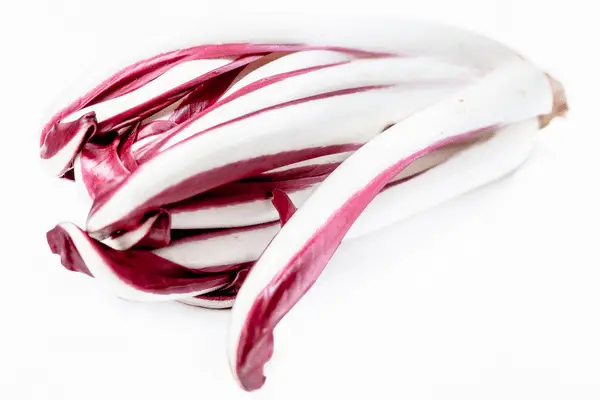
The most common variety of radicchio, Rosso di Treviso Tardivo, is characterized by its deep red color and bitter taste. Rosso di Treviso Tardivo is indigenous to the Mediterranean region.
Unlike other varieties of radicchio, which are often used as an ornamental plant, Rosso di Treviso Tardivo is grown specifically for culinary purposes. When cooked, the bitterness of the radicchio is mellowed, and its flavor takes on a sweeter, nuttier flavor profile.
2) Rosso di Chioggia
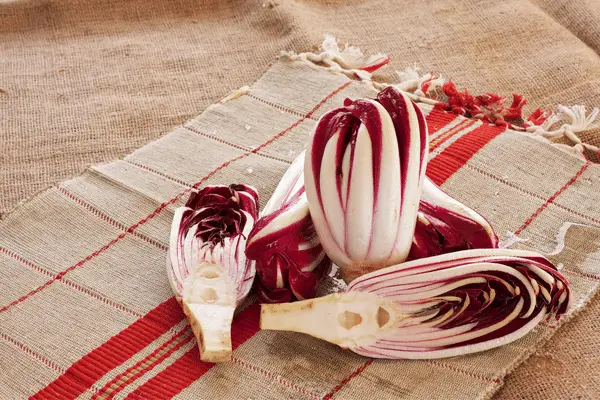
Rosso di Chioggia radicchio, often referred to simply as radicchio, or Palla Rossa (red ball), is the second most commonly known and widely grown type of radicchio in the world. This is the type of radicchio you are likely to find on the shelves of your local grocery store.
Radicchio Rosso di Chioggia is a type of radicchio that is grown mainly in the Veneto region of Italy. It is a tightly packed head of leaves that are deep red in color with white ribs. The leaves are crunchy and have a slightly bitter flavor. Radicchio Rosso di Chioggia is typically available year-round.
3)Rosa del Veneto
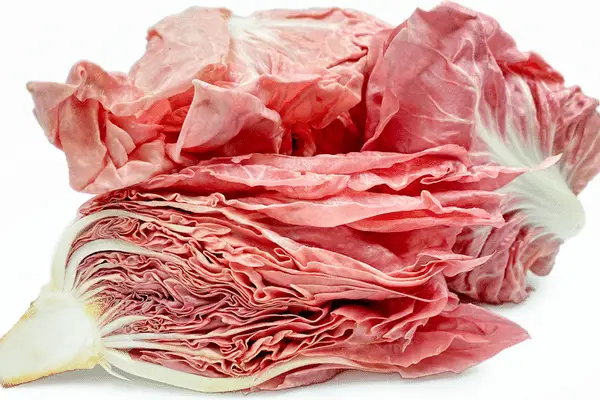
Rosa del Veneto is a type of radicchio that is grown in the Veneto region of Italy. It is a slightly more bitter variety of radicchio, with a deep red color and white veins.
Rosa del Veneto can be found in some specialty stores, but it is not as widely available as other types of radicchio. It has a delicate flavor and a slightly bitter taste. Radicchio rosso di Chioggia is a good source of vitamin C and potassium.
4)Variegato di Castelfranco
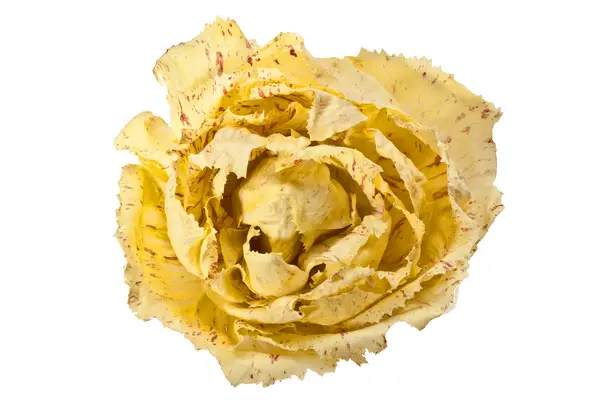
Variegato di Castelfranco is a type of radicchio that is grown in the Veneto region of Italy. It is a variety of radicchio that has both red and white leaves. The leaves are streaked with white, giving the plant a variegated appearance.
Variegato di Castelfranco is widely available in Italy, and it has recently become popular in other countries as well. Thanks to its unique flavor, this versatile vegetable is sure to become a favorite in kitchens around the world.
5) Rosso di Verona
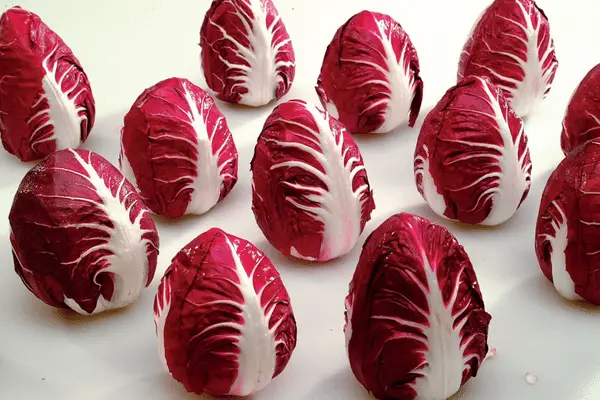
Much like Variegato di Castelfranco, Rosso di Verona is a type of radicchio that is grown in the Veneto region of Italy. It is a deep red variety of radicchio with white veins. The name “Rosso di Verona” comes from the Italian words for “red” and “of Verona,” which refers to the city in the Veneto region where this type of radicchio is commonly grown.
Radicchio Rosso di Verona has a slightly bitter taste, and it is often used in salads or as a garnish. This type of radicchio is also known for its high nutritional value, as it is a good source of vitamins A and C, as well as dietary fiber. While it can be eaten raw, radicchio Rosso di Verona is often cooked before eating, as this helps to mellow out its bitterness.
6) Rosso di Treviso Precoce
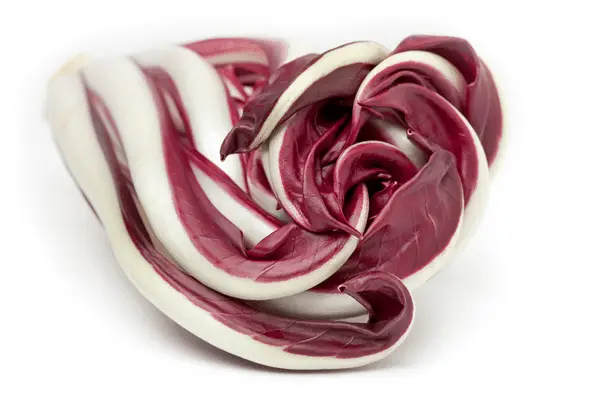
Radicchio Rosso di Treviso Precoce is a type of radicchio that is grown in the early spring. It has a sweet and sour flavor and a slightly bitter taste. The leaves are red with white veins and are slightly curly. It is used in salads, soups, and side dishes.
Growing Radicchio
Radicchio is a cool weather crop and can be grown in both spring and fall. In warmer climates, it can also be grown in the winter. Radicchio prefers full sun but will tolerate partial shade. The plants need well-drained soil and should be fertilized with a balanced fertilizer before planting.
Radicchio can be seeded directly into the garden or started indoors and transplanted later. Seeds should be planted ½ to 1 inch deep. If starting seeds indoors, they should be started 8 to 10 weeks before the last frost date. Transplant seedlings outdoors when they are 4 to 6 inches tall and have their first true leaves.
Plants should be spaced 12 to 18 inches apart in rows that are 24 to 36 inches apart. Radicchio is a heavy feeder and will need to be fertilized every 4 to 6 weeks during the growing season. Water plants deeply but do not keep the soil too wet. Radicchio is ready to harvest when the heads are firm, and the leaves are a deep red color.
The Health Benefits of Eating Radicchio
Radicchio is an excellent source of vitamins. It also contains antioxidants, which can protect against cell damage and improve heart health. Some of these vitamins include:
Radicchio is High in Vitamin A
Radicchio is a good source of vitamin A, which is important for vision, immune function, and cell growth. A single cup of radicchio contains nearly 20% of the recommended daily intake of vitamin A. This vitamin is essential for healthy vision, and it also plays a role in immune function and cell growth. Vitamin A deficiency can lead to a number of health problems, so incorporating foods like radicchio into your diet is a good way to ensure that you are getting enough of this important nutrient.
Radicchio Also Contains Vitamin C
This important vitamin plays a role in many different aspects of health, including the development and maintenance of bones, skin, and blood vessels. Vitamin C is also involved in the body’s immune system and helps to protect cells from damage.
Radicchio is a Good Source of Vitamin K
Vitamin K is a vital nutrient for many bodily functions. It helps with blood clotting and bone health, and it is also involved in the body’s immune system.
A single cup of radicchio contains over 100% of the recommended daily intake of vitamin K. This makes it a wonderful source of this important nutrient.
While all forms of vitamin K are important, radicchio is particularly rich in a type of vitamin K known as phylloquinone. This form of vitamin K is essential for the clotting of blood, and it also plays a role in bone health.
In addition to being a great source of vitamin K, radicchio also contains other important nutrients such as folate and antioxidants. These nutrients help to boost the immune system and protect against cell damage.
As a result, radicchio is an excellent food for overall health.
Radicchio is a Good Source of Fiber
Fiber helps to promote gut health and can also help to lower cholesterol levels. A single cup of radicchio contains 3 grams of fiber. This is about 10% of the recommended daily intake of fiber.
Fiber is important for gut health, and it can also help to lower cholesterol levels. In addition, fiber helps to keep you feeling satisfied and can aid in weight loss.
In addition, radicchio has been shown to lower blood pressure and cholesterol levels by preventing the buildup of plaque in the arteries.
Radicchio is a low-calorie food, making it wonderful for those trying to lose weight.
Different Ways to Prepare Radicchio
Radicchio can be eaten raw or cooked. When eaten raw, it has a slightly bitter flavor that some people find to be unpleasant. Radicchio can also be grilled, roasted, or sautéed. These methods of cooking can help to mellow the bitterness and bring out the sweetness of the vegetable.
When choosing radicchio, look for heads that are firm and have crisp leaves. Avoid radicchio that is wilted or has brown or yellow leaves. Radicchio can be stored in the refrigerator for up to two weeks. Wrap it in a plastic bag or place it in a container with a lid to prevent it from drying out.
To Close
Radicchio is a leafy green vegetable that can be found in red or white varieties. It has a slightly bitter taste and is high in antioxidants. Radicchio is a good source of vitamins A, C, and K, as well as folate and potassium.
Radicchio can be consumed raw or cooked and can be added to salads, soups, or pasta dishes. However you decide to prepare it, radicchio is sure to add a touch of elegance to any meal.
References:
- Nicoletto, C., & Pimpini, F. (1970, January 1). Influence of the forcing process on some qualitative aspects in Radicchio “rosso di treviso tardivo” (Cichorium Intybus L., group rubifolium). 1. nitrate, nitrite and organic nitrogen. AGRIS. Retrieved from https://agris.fao.org/agris-search/search.do?recordID=DJ2012076272
- Sambo, P., Friedrich, H., Nutter, F. W., & Guan, J. (1970, January). Organic cultivation of Radicchio Rosso di Chioggia (chicorium intybus … researchgate.net. Retrieved from https://www.researchgate.net/publication/257563375_Organic_Cultivation_of_Radicchio_ross o_di_Chioggia_Chicorium_intybus_var_silvestre_in_Iowa
